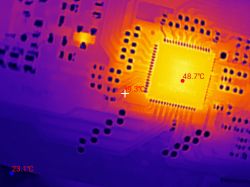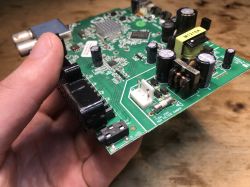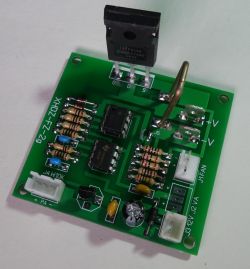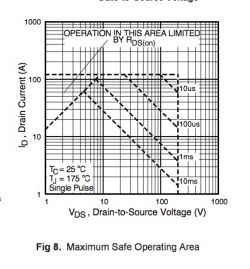When testing, for example, power supplies, an electronic load is useful to, for example, force the flow of a specific current. In practice, light bulbs are often used quickly (which is a bad solution due to the low resistance of the cold fiber), resistors, or a random transistor on the heatsink, the base or gate of the transistor is controlled by an operational amplifier, or often without a feedback loop with an ordinary potentiometer. It is available on auction portals electronic load module priced ~ $ 8. In the description of the auction, we see the following parameters: maximum power 75W, continuous power 50W, maximum current 10A, maximum voltage 100V. On the board, we see a measuring resistor (in the form of a bent wire), a transistor IRFP250N, TL431, LM258, LM393. To start the artificial load, mount the transistor on a heat sink (preferably equipped with a fan), attach a 5-20k potentiometer ensuring current regulation, and connect a 12V power source.
The V- V + connector is used to connect the cables connecting the tested device,
in series in this circuit it is worth to turn on the ammeter to control the set current.
The 12V power supply is supplied to the J3 connector, the device consumes a current
The V- V + connector is used to connect the cables connecting the tested device,
in series in this circuit it is worth to turn on the ammeter to control the set current.
The 12V power supply is supplied to the J3 connector, the device consumes a current
Cool? Ranking DIY







